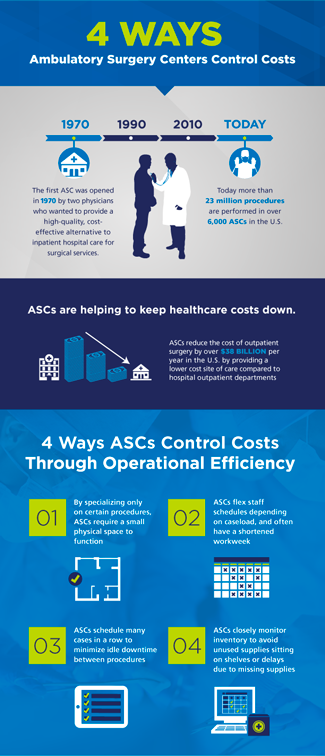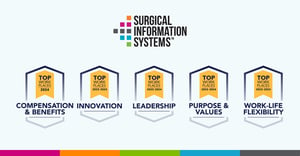As healthcare costs continue to rise while reimbursements fall, ambulatory surgery centers (ASCs) have demonstrated an ability to control costs and save money – $38 billion, in fact. A recent study conducted by Healthcare Bluebook™ found that "ambulatory surgery centers reduce the cost of outpatient surgery by more than $38 billion dollars per year by providing a lower-cost site of care compared to hospital outpatient departments (HOPDs)."
That's a statistic worth celebrating during 2016 National ASC Week (August 8-12). In recognition of the significant role that ASCs play in the evolving era of value-based healthcare, let's break down four ways that ASCs control costs through efficient operations.
They're Focused
By specializing in one particular area and focusing only on certain procedures, ASCs require a much smaller space to function – fewer operating rooms, smaller pre-op areas, and less waiting room space. This allows facilities to have a smaller footprint and reduce overhead.
They Flex Staff
ASCs only need staff for surgeries that are scheduled on any particular day, so they often hire part-time employees and flex schedules daily depending on the center's caseload. Many facilities even close one day or more each week, which saves cash that would go toward general staff and other overhead costs.
They Optimize Time
To reduce additional staffing needs, many ASCs use technology that captures patient pre-registration and pre-op information prior to scheduled appointments. Centers also aim to schedule cases efficiently. For example, procedures that are most likely to be completed within their designated OR time are scheduled in the morning so as not to risk running into later appointments and interfering with the entire day's schedule. They also strive to shorten turnover time between procedures.
They Manage Inventory
One of the biggest expenses for ASCs is the cost of medical supplies and equipment. Software enables ASCs to closely monitor supply levels, meaning they can keep inventory low and not tie up working capital in unused supplies sitting on stockroom shelves. By loading inventory into the system in a very detailed manner (every item needs to have the correct unit of measure, unit price, etc.), ASCs can quickly determine the real cost of supplies for a case. With that data at hand, ASCs can compare numbers between procedures and surgeons – as well as pricing between vendors – to identify and capitalize upon savings opportunities. It's also an important input to case costing, which allows centers to make sure that what they are getting paid for a procedure actually covers expenses.
The Healthcare Bluebook study results demonstrate that ASCs' cost-cutting strategies are working, and savings are passed along to payers and patients. It's also proof that ASCs are well-positioned to participate in value-based models, where reimbursement is aligned with the delivery of high-quality, cost-effective care.
Let's help each other succeed: please use the comments section below to share strategies that your ASC is implementing to control costs.



















